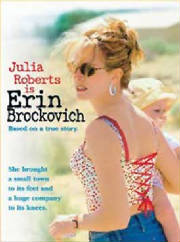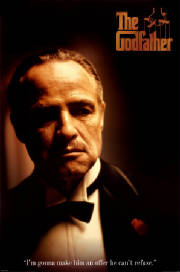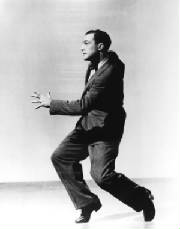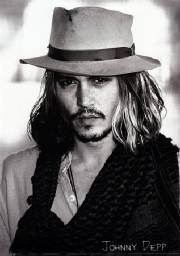 |
tagline: Phrase or short sentence that characterizes a film and attracts audiences.
take: A single continously recorded shot of a scene with a particular camera setup.
talkies: Term used for films with sound beginning with "The Jazz Singer" (the first film with
sound) in 1927. It marked the dawn of sound films.
tearjerker: A sentimental or emotional film, usually with tragic circumstances, manipulative
scenes, and dramatic musical scoring. Often considered to be chick flicks.
telephotolens: Refers to the camera lens with a very long focal length and narrow angle of view--
compresses or condenses depth in space.
theme: Central idea or concern of a film.
theme music: The opening or closing music of a film, often contains the film's signature or leitmotif
tune that is associated with a character or a situation.
tilt shot: A camera tilted up and down on a diagnal along a vertical axis.
time lapse: A method of filming where frames are shot much slower that at the normal rate,allowing
action to take place between frames, thus giving the appearance of action taking place in the finished product.
tint: Use of color to physically tint film stock to achieve a desired mood, usually done by hand;
often used in black and white films before color became widespread.

title role: Lead role that is named after the title of the film: Examples : Julia Roberts' lead
role in "Erin Brockovich" (pictured), Steve McQueen's title role in "Junior Bonner" (1972), and Burt Lancaster's title role
in "Elmer Gantry" (1960).
tone: Mood or atmosphere of a film scene.
tour de force: French term meaning "forceful turn." Usually refers to a lead actor's performance
that was incredibly skillful, notable, etc.
tracking shot: A smooth shot in which the camera moves alongside the subject, usually mounted
on a dolly, in a side to side motion.
trademark: Personal touch of an actor, director, screenwriter, etc.
Example: Alfred Hitchcock's cameos in his films.
trailer: Same as preview; A short film including excerpts from the feature film used as advertisement
for the film.
transistion: A way to move from one shot and scene to another, includes: cuts, fades, dissolves,
and wipes.
treatment: Detailed story or presentation of a film's story with action and characters described
in prose form often to market or sell the script or project.

trilogy: A group of three films that together composes a larger narrative and are related in
subject or theme. Examples: Francis Ford Coppola's "The Godfather" trilogy (pictured) and Peter Jackson's "The Lord of the
Rings" trilogy.
|
 |
|

triple threat: Tefers to an actor/actress who can sing, dance, and act. Examples:
Gene Kelly (pictured) and Fred Astaire.
Also, refers to someone who acts, directs, and writes their own screenplays. Examples: Orson Welles in "Citizen
Kane" (1941) and Billy Bob Thornton in "Sling Blade" (1996).
twist ending: A film that has a surprise ending that shouldn't be revealed until
it is scene. Examples: "Citizen Kane" (1941), "Psycho" (1960), and "Seven" (1995).

typecasting: When an actor/actress is commonly identified or stereotyped in specific
roles: Examples: Johnny Depp (pictured) as eccentric, weird characters and John Wayne as the tough guy in westerns and war
films.
|
 |
|
|
 |
 |
|
 |
 |
 |
|
 |
 |
|